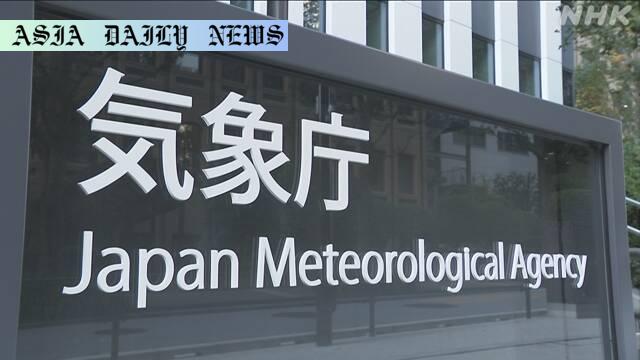Typhoon Forecasting: Experts emphasize AI integration to enhance Japan’s typhoon predictions with precise and timely data.
Japanese experts recommend implementing AI for improved typhoon forecasts.
The integration will provide precise and timely updates about typhoon paths.
Japan aims to introduce advanced technologies by 2030 to enhance forecasting.
Using AI, the Japan Meteorological Agency hopes to replicate European advancements.
Frequent updates and long-term predictions are vital societal needs.

Emphasizing the Significance of Typhoon Forecasting in Japan
Japan, a country prone to devastating typhoons annually, is currently at the forefront of exploring innovative technological advancements to enhance disaster prediction and management. Recognizing the impact of these storms on public safety, transportation systems, and local economies, Japanese experts have recommended a robust integration of artificial intelligence (AI) into forecasting systems. By adopting AI-based solutions, the Japan Meteorological Agency (JMA) aims to provide more precise predictions surrounding typhoon paths and intensities, revolutionizing how the nation prepares for these natural calamities.
Why AI is the Dawn of a New Era in Forecasting
The adoption of AI reflects an exciting shift in typhoon forecasting technology. European weather agencies have already reported progress in enhancing prediction accuracy using AI-based models. Japan, embracing this trend, is determined to push the boundaries further by introducing AI-driven typhoon path projections. Experts are rallying around this breakthrough, with Fudeyasu Hironori, a prominent meteorology professor from Yokohama National University, emphasizing the transformative power of advanced observation methods coupled with AI tools. Enhanced AI models can analyze vast amounts of meteorological data and patterns faster than ever before, offering actionable insights in near real-time.
2030: Pioneering a Future-Proof System
The JMA has strategically set 2030 as the benchmark year to unveil its advanced forecasting models. Key improvements include predicting typhoon formation zones up to a month in advance and providing updates on storm positions every six hours instead of the current daily updates. These initiatives are a nod to evolving societal needs, where communities require prompt evacuation notices and reliable storm information to safeguard lives. Frequent updates and better accuracy will enable citizens to plan effectively, reducing the socioeconomic impact of typhoons.
Expanding Observation Capabilities
To complement AI systems, experts have highlighted the importance of intense observational data collected through aircraft, ships, and remote sensors. This multi-modal approach ensures that AI models are equipped with high-quality datasets, enabling precise simulation and forecasting. By leveraging these tools, the proposed improvements aim to make forecasting more adaptable and highly localized, catering to diverse geographical challenges posed by storm behavior across Japan’s extensive coastline.
A Global Perspective: Learning from Europe
Japan’s exploration of AI-based forecasting is significantly influenced by European meteorological advancements, where AI has been pivotal in enhancing the accuracy of storm path predictions. Building upon these global models, Japanese officials hope to create forecasting solutions with greater regional specificity. This global collaboration encourages cross-border innovations, highlighting how nations can tackle shared challenges like extreme weather through collective intelligence.
Adapting to Evolving Societal Needs
The experts’ recommendations align closely with modern societal needs, specifically the growing demands for reliable and actionable information. As public transportation services frequently halt operations in anticipation of typhoons, precise data can minimize economic disruptions by allowing services to operate with better risk assessments. Furthermore, the emphasis on wide-area evacuations underscores the moral responsibility of meteorologists to deliver timely, life-saving information. Enhanced forecasts provide citizens with a stronger sense of security, fostering trust in institutional preparedness and response systems.
Conclusion: Pioneering a Resilient Japan
The integration of artificial intelligence in Japan’s typhoon forecasting signals a transformative era in meteorological sciences. By 2030, advanced prediction models and technologies will offer residents unparalleled precision and foresight, shaping a safer and more resilient Japan. This leap forward isn’t just about leveraging technology but also about meeting the societal demand for rapid, reliable, and actionable information – a step crucial in mitigating the devastating impacts of typhoons.
Commentary
The Vision for AI-Driven Typhoon Predictions
The move towards AI-powered typhoon prediction systems in Japan reflects a powerful alignment between science and societal demand. Over the years, typhoons have wreaked havoc across the country, both in terms of human casualties and socioeconomic disruptions, leaving a glaring necessity for enhanced forecasting tools. AI, with its ability to process complex datasets and adapt in real time, represents a game-changer for early disaster management. The integration of cutting-edge observation technologies with AI-driven models is a testament to human innovation striving to better prepare for nature’s fury.
Challenges Along the Way
Implementing AI systems isn’t without challenges. From ensuring high-quality observational data to training robust prediction models, the road to AI integration requires meticulous planning, funding, and collaboration. Japan’s decision to invest in advanced observation platforms using aircraft, ships, and sensors highlights a holistic strategy for integrating multiple data sources. While the timeline pointed towards 2030 may seem distant, the structured approach ensures the initiatives are sustainable and effective in meeting disaster preparedness goals.
A Message of Hope and Preparedness
Most importantly, this initiative represents hope. A nation so deeply affected by typhoons for centuries is now taking bold steps to craft a future where its citizens are safer and better informed. These advancements will not only minimize losses but also empower communities, businesses, and governments to coordinate better in the face of impending disasters. If successful, Japan could very well set a global benchmark in meteorological sciences, inspiring other nations to adopt AI for better forecasting and disaster management systems.


